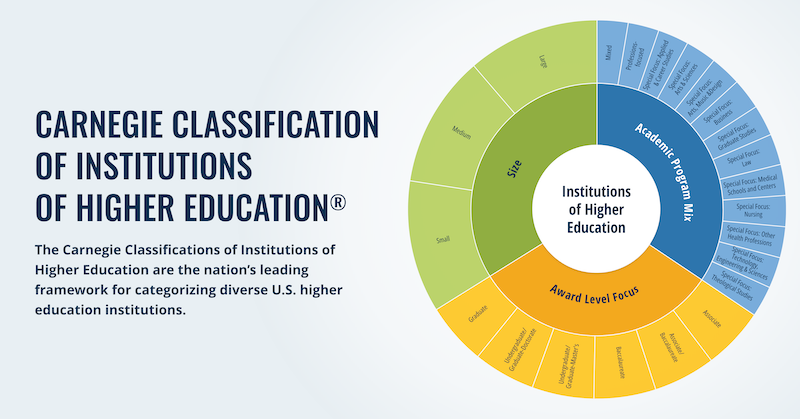In the field of healthcare, there persists a belief that the practice of medicine is artisanal in nature. Doctors are seen as the ultimate authority, and in truth, a patient’s illness is often an experiential learning ground where doctors try out various forms of treatment in an effort to find the one that works.
Practice and learning often look like, “You have an infection, let’s try this antibiotic. If it doesn’t work then we will try a different one.” Or an oncologist might prescribe one regimen of chemo therapy and when it doesn’t produce the desired result may try a different regimen including different drugs and the addition of radiation therapy.
During the balance of their careers, these doctors learn (or don’t) to select treatments that will work for most people, tailoring their recommendations based on small variations they see in individual patients. Teachers do the same. Over time they learn (or don’t) what style produces the best learning outcomes in the majority of their students and they tailor their pedagogy to meet the needs of individuals in their classrooms. Where a system based on this style of mastery fails is in placing the burden of performance onto the shoulders of the practitioner, whether doctor or teacher. And it fails because each practitioner is left to a journey of self-discovery about what does and does not work. With each new clinician and teachers comes a journey repeating the same steps and missteps for every individual. In short, it fails to consider the broader system at work and what might be leveraged to anticipate needs, provide structure, and accelerate learning. In healthcare this mentality is starting to change. A realization is dawning that standardization, in training, in process, and, to a degree, in treatment can actually improve health outcomes while freeing clinicians to apply patient specific recommendations as needed. Standardization is creating freedom in the practice of medicine.
There seems to be a deep aversion to the idea of standardization in education.
There seems to be a deep aversion to the idea of standardization in education. I sense it is because when educators think of standardization they think of examples such as “scripted curriculums” and “teacher proofing.” Their reaction may stem from two common beliefs: each student is unique, and each teacher is a craftsman. This seems to parallel what has been experienced in healthcare, each patient is unique and each clinician is a craftsman. Seen in this way, teaching and learning are artisanal activities. Teaching is a craft learned by trial and error, refined over time, and ultimately perfected by the educator within the confines of their classroom. While to an extent this will always be true, as an improvement advisor, my perspective is standardization can be less about “teacher proofing” and more akin to the concept of standard work. Defined as those day-to-day activities in which all educators engage but which display so much variation in practice.
When applied thoughtfully standard work can improve outcomes while creating freedom to meet individual needs when those needs vary from the majority.
People like Avendis Donabedian, Paul Batalden, and Donald Berwick, in an effort to transform the quality of healthcare, led the way in applying tools first leveraged in manufacturing to assist in creating a systems perspective for their field. They did this while preserving their appreciation for healthcare as both unique and more complex than assembly lines. What these thinkers realized was they could not achieve the outcomes they desired for patients until they could first see the system (those common processes and practices) that was producing those outcomes. They also knew a core component of systems thinking would be the ability to measure what they did—or did not—achieve. They needed to move the focus from artisanal knowledge, where all expertise is tacit, contained in a singular practitioner’s mind, to a system, where much knowledge of practice is explicit.
Since 1991, when Don Berwick and the Institute for Healthcare Improvement began their work, healthcare has struggled to find its way into pragmatic standard practices where appropriate. Pragmatic, in that there is recognition that each patient is unique, that each patient will require local adaptation of treatment to achieve improved health outcomes but that there are also processes and practices that are common to all patients. There are now known standard work practices in medicine for the assessment, diagnosis, and routine treatment of patients. However, the clinician is never reduced to a robotic assembly-line worker. Instead, standard practices free practitioners to leverage all of their learning, experiences, and tacit knowledge to focus on the uniqueness of each patient they treat. Within standard work processes the clinician can now adjust, leverage new information, adapt to emerging circumstances, all in an effort to customize treatment for the individual. The paradox emerges; it is through standardization that the optimal opportunity for individual customization is realized.
Standard practices free practitioners to leverage all of their learning, experiences, and tacit knowledge.
The realization of a visible system, one with known processes, known data, providing some level of predictable outcomes for teachers and students is what education needs now. Teachers should have the discernment and expertise of an artisan, but also the ability to leverage their expertise within standard work processes when the circumstances of the student, the classroom, or the school demand it. They should be able to recognize when a standard process for assessment, diagnosis, or an intervention works for the majority of cases and when accessing and utilizing tacit knowledge of teaching and learning will provide for improved outcomes for students. As in healthcare, the tension between standardization and customization can be resolved to provide teachers the greatest freedom to address the needs of their students. It recognizes the most successful systems are systems that are defined and once so defined are adapted locally, reflecting the unique circumstances, knowledge and experience the teacher has developed over the course of their career.
I recently had the opportunity to experience just how freeing a piece of standard work can be. While coaching a group of principals focused on improving their instructional feedback to new teachers, one principal created a feedback conversation protocol to use during each interaction with his new teachers. The initial reaction to this standard piece of work by the other principals was immediate rejection, “this protocol will take too long, does not reflect the circumstances of my school or in my district, etc.” But the principals’ changed their minds when they observed the protocol in practice between the initiating principal and one of his teachers. It was in that moment they realized the standard work gave numerous opportunities for the principal to apply his subject matter expertise, tailoring the conversation in a productive way while adhering to the intent of the protocol he had developed.
Ultimately the principals involved had a breakthrough regarding the efficacy and applicability of standard work in their settings. When education as a whole can embrace the paradox of standardization as a means of freeing practitioners to apply their expert knowledge, then, I believe, we will be best positioned to describe our systems, to measure them, and to pursue the continuous improvement we need to achieve the results we want to see.
September 26, 2014
Panelists at Carnegie’s convening, Using Evidence to Advance Teaching: The Promise of Improvement Science in Networks, discuss how to create a political environment to support and not impede the use of improvement science.
December 18, 2014
Iterative testing from a Carnegie Alpha Lab practitioner-researcher partnership highlights the potential impact of a mindset intervention followed several weeks later by a utility value intervention administered online to reduce course dropout.







